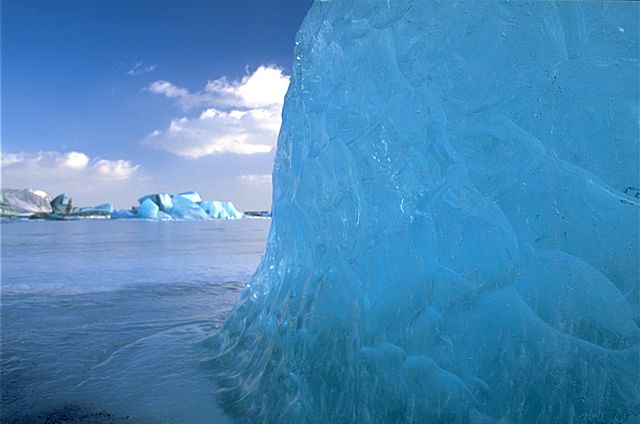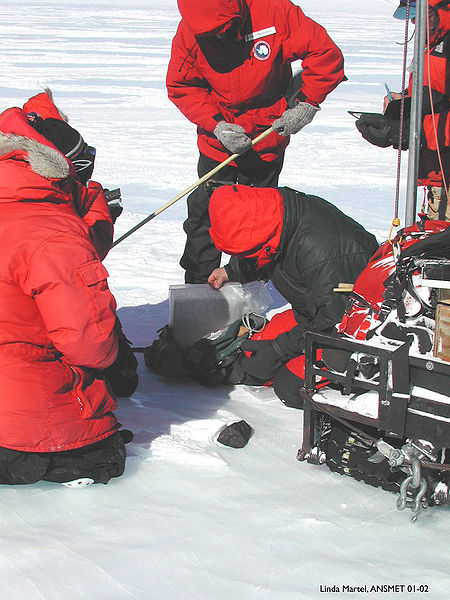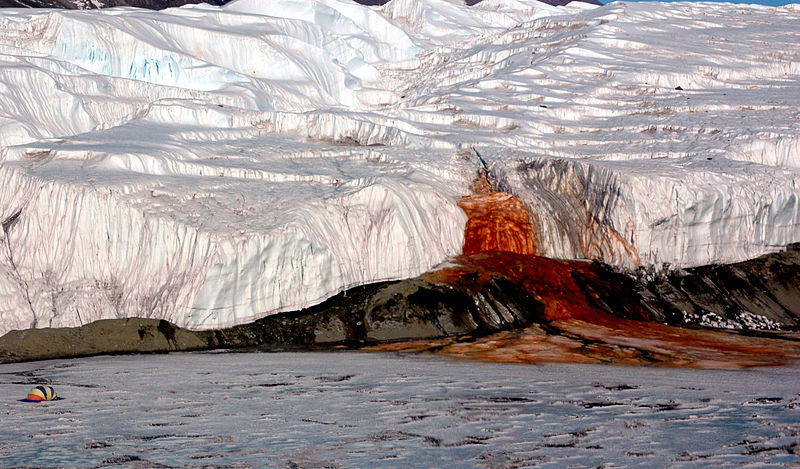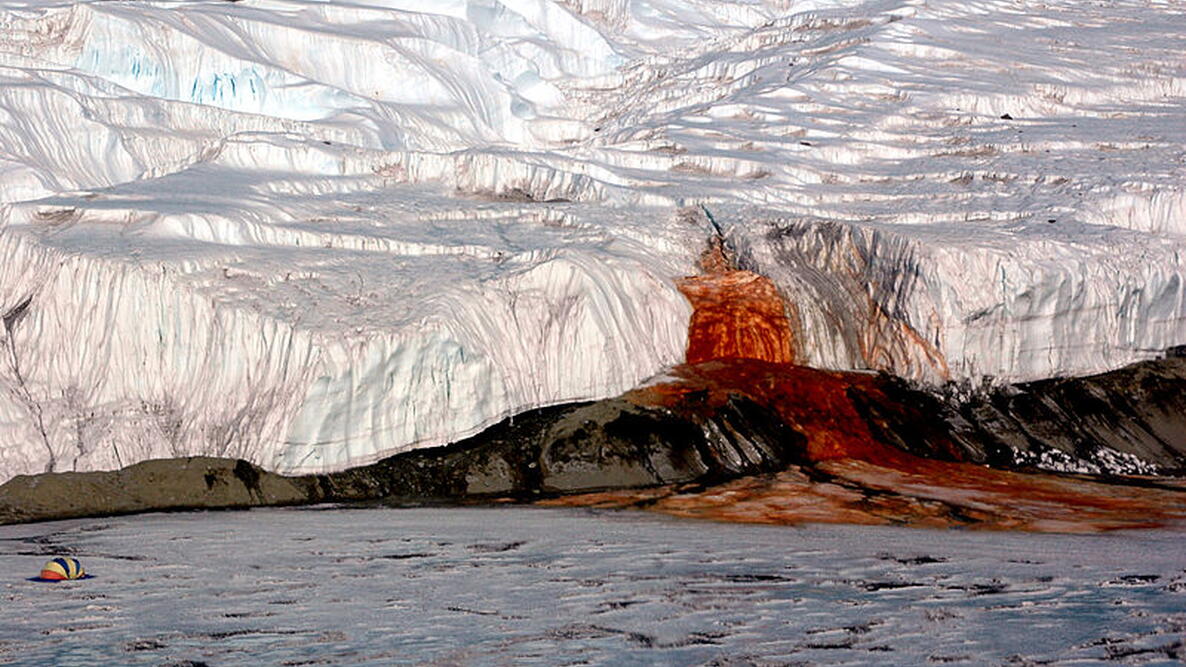When you think of Red, White and Blue you normally think of the flag and the Fourth of July. If you are a scientist in Antarctica, however, you may be thinking about the latest studies on the red, white and blue of the world’s coldest continent.

Some of the ice in Antarctica is deep blue or turquoise. Source: Wikimedia by Andreas Tille
Most ice is clear or white. In Antarctica, however, an estimated 1% of the continent is covered with stretches of blue ice. Less beautiful (and much creepier), in the Taylor Glacier, the ice is red and the eerie Blood Falls gush into the seas. The mystery of these strange ice colors was solved in the last 2 months.
It turns out that blue ice is very old ice. At least one stretch of Antarctic ice is over a million years old. New ice is full of air bubbles, which makes it look white. As years of snow and ice accumulation bury older layers of ice, pressure squeezes the air out. Without the bubbles, light can penetrate ice more deeply. To the human eye, ancient glacial ice acts like a filter, absorbing red and yellow light and reflecting blue light, creating the beautiful blue hues.

These Antarctic ices are some of the best areas in the world to find meteorites. Source: NASA
Not only are these icy areas ancient, they are some of the best areas in the world for finding meteorites that have pummeled the continent for thousands of years. The dark stones are easy to spot against the clear blue ice. More than 25,000 meteorites have been collected from blue-ice areas in Antarctica.

Yech. Some Antarctic ice is bloody red. Source: Wikimedia by Peter Rejcek
An eerier area of colored ice is Taylor Glacier, where the notorious blood falls flows with deep, bloody red water. Microbiologist Jill Mikucki tested a new airborne electromagnetic sensor that studies the ground to a depth of about 1,000 feet. It showed an ancient network of salty water filled with life. The water rusts the iron in the surrounding soil, producing the bizarre red water that gushes out where Taylor Glacier meets the ocean.
So as the Fourth of July draws near, remember—even the South Pole is wearing red, white and blue.


Comments